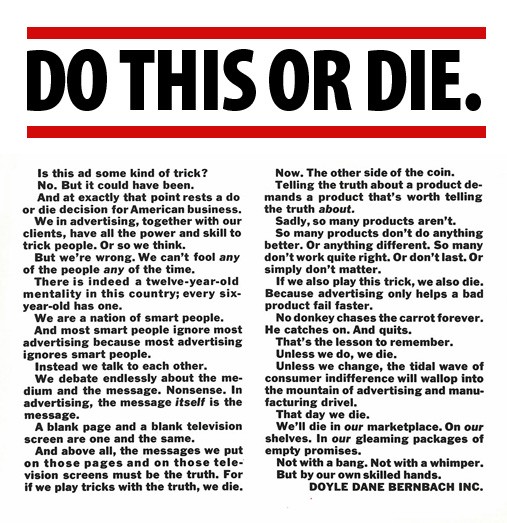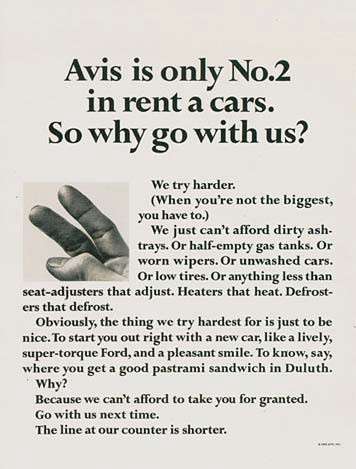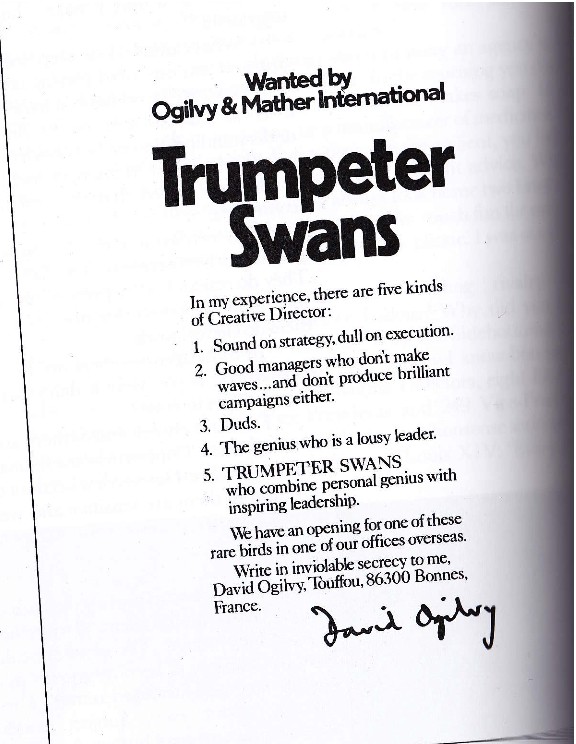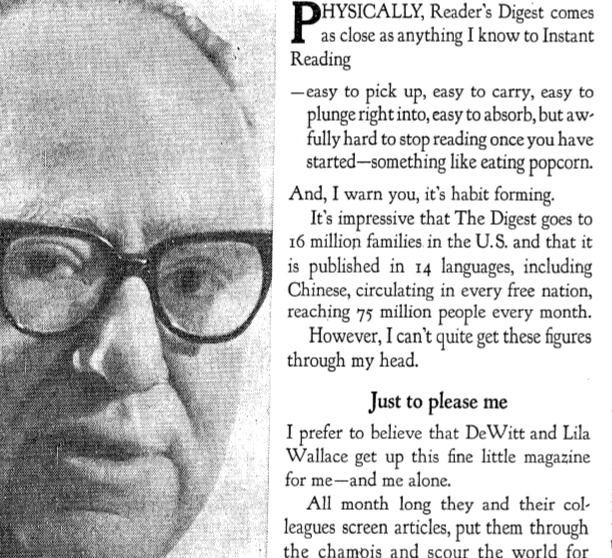Footnotes of Mad Men: Calling All Trumpeter Swans
by Natasha Vargas-Cooper

Who knew that the advertising industry housed so many men of integrity? The ad above is by Bill Bernbach, a founder of Doyle Dane Bernbach and the Great Father of modern advertising. It was Bernbach who popularized the technique of counter-intuitive advertising. “Now I’m not talking about tricking people,” Bernbach said. “If you get attention by a trick, how can people like you for it? For instance, you are not right if, in your ad, you stand a man on his head just to get attention. But you are right to have him on his head to show how your product keeps things from falling out of his pockets.”
But what happens when everyone starts imitating the vanguard?
Bernbach choose to stick with the formula that set DDB out from the rest of Madison ad: use the flaws of a product to your advantage.

If we use Sally Draper’s Land O’Lakes example of the lovely Indian lady holding a box of butter of a lovely Indian lady holding a box of butter to infinity, in this ad, Bernbach was critiquing not just the butter but the whole box. Advertising companies did not publicly acknowledge that they were advertising companies. (As in the words of Patron Saint of Serialized Drama, Tony Soprano: “THERE IS NO MAFIA!”)
That is to say, when you admit that you are in the persuasion business, it speaks immediately to people’s fears: you are persuading them with lies. Then Bernbach pulled this stunt, breaking down the fourth wall in a mea culpa that simultaneously trashed the whole industry and valorized one of the biggest companies in the industry. Think of the Etta James song that crooned at the end of the episode, “Trust In Me”
“Trust in me in all you do
Have the faith I have in you.”

• Another master of public pith was David Ogilvy. He took the same strategy as Bernbach in calling the rest of the business a confederacy of hacks in this recruitment ad that ran in a series in several trade papers:

• “Although a crusader of the first order,” ad man Leo Burnett wrote in the pages of Reader’s Digest, “[Reader’s Digest] does not preach, but helps me reach my own conclusions.”

It was customary that the Digest would ask newsmakers to write a letter about why they read the magazine-to this day it has the highest paid circulation in print. It’s also one of the few magazines that has never run a tobacco ad. The Digest was also the first of its kind to publish findings about the link between cigarettes and lung cancer.
So Leo Burnett was an unlikely endorserment, seeing as how he was synonymous with smoking. Burnett created the most seductive cigarette icon: the Marlboro man. Nevertheless, the image of Burnett ran in the only magazine that refused to run images created by Burnett. In the ad, he praised the Digest’s decency, editorial sense and courage for taking on “knotty” or “abstruse” issues (like “some of the basic clues to the mystery of cancer”). And with a wink to his own reputation, Burnett warns the reader that the magazine “is habit forming.”
You can always find more footnotes by Natasha Vargas-Cooper right here, or, you know, you can get a whole book of ‘em.
